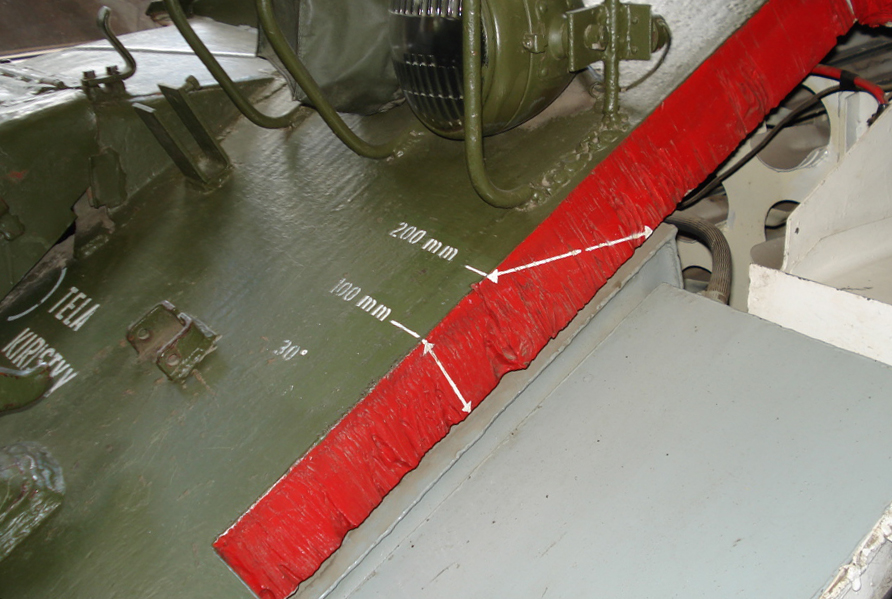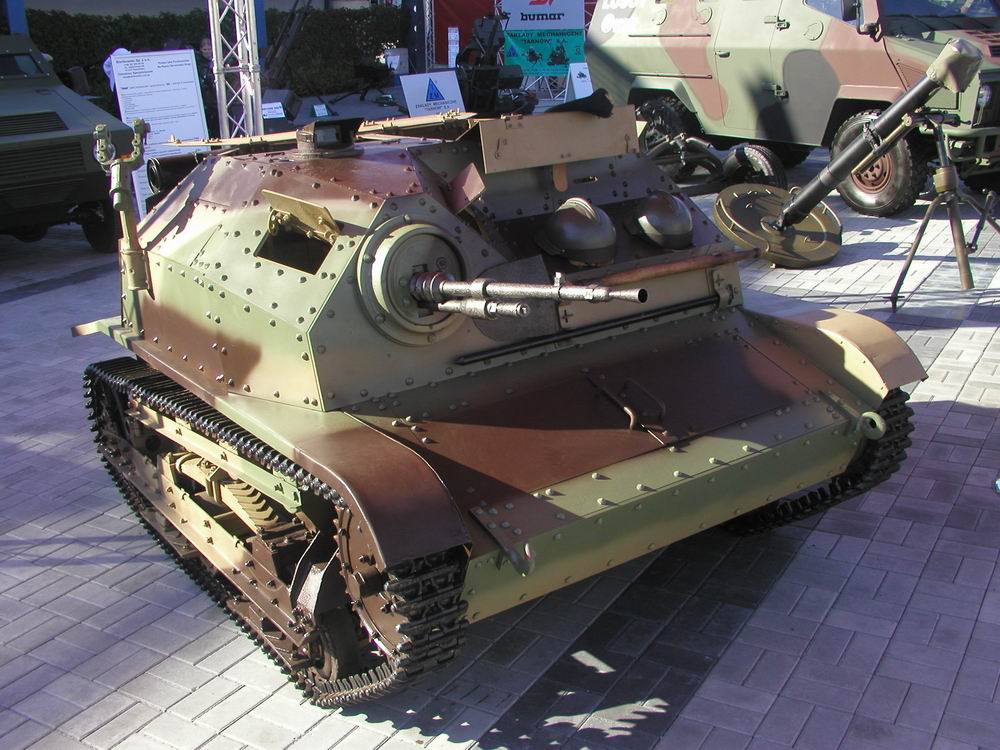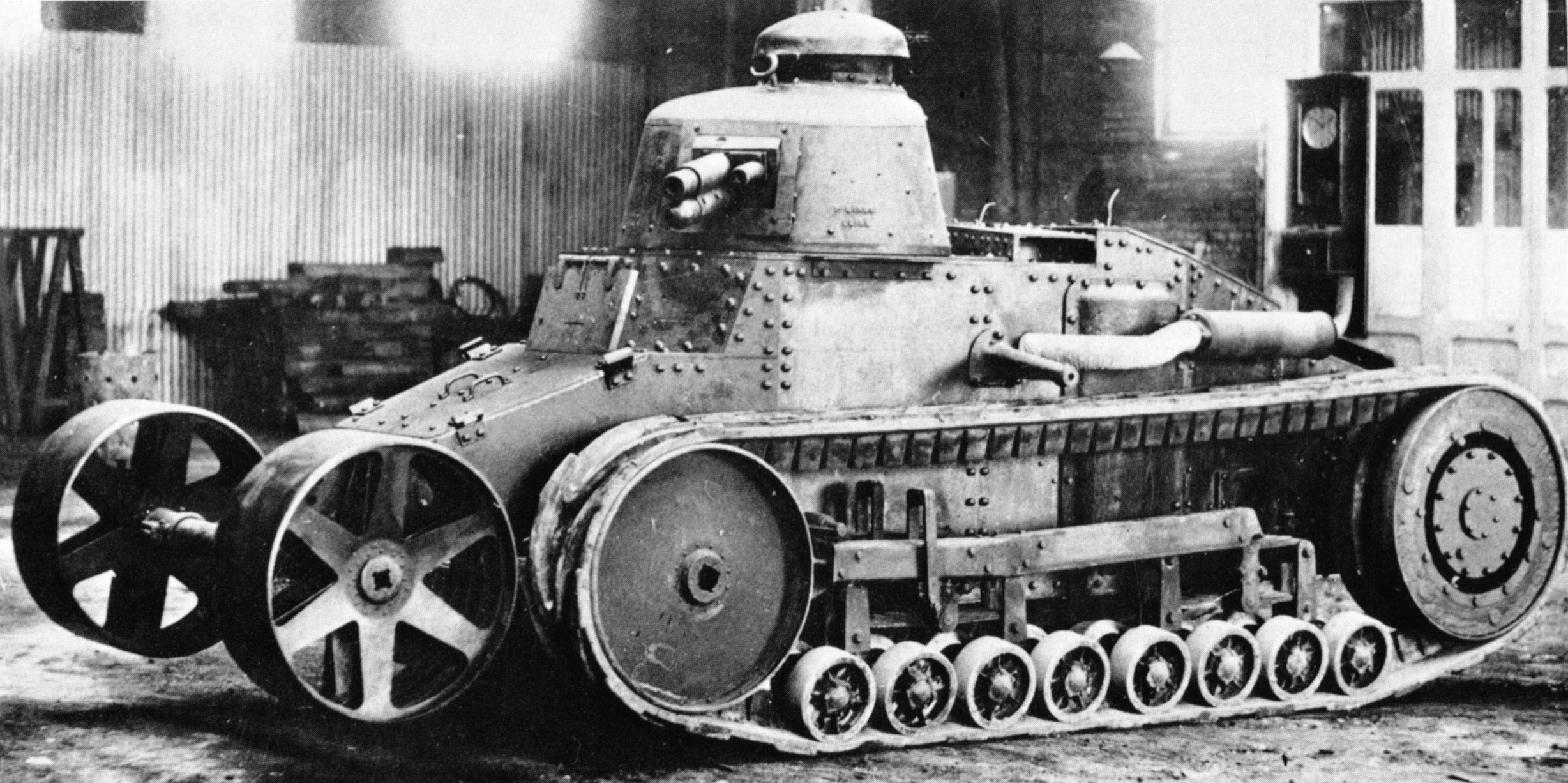|
Hotchkiss H35
The Hotchkiss H35 or was a French cavalry tank developed prior to World War II. Despite having been designed from 1933 as a rather slow but well-armoured light infantry support tank, the type was initially rejected by the French Infantry because it proved difficult to steer while driving cross-country, and was instead adopted in 1936 by the French Cavalry arm. From 1938 an improved version was produced with a more powerful engine, the ''Char léger modèle 1935 H modifié 39'', which from 1940 was also fitted with a longer, more powerful 37 mm gun. It was intended to make this improved variant the standard light tank, with at least four thousand produced to equip new armoured divisions of both the Cavalry and the Infantry arms, but due to the defeat of France in June 1940, total production of both subtypes was limited to about 1200 vehicles. For the remainder of the war Germany and its allies used captured Hotchkiss tanks in several modifications. Development In 1926, ... [...More Info...] [...Related Items...] OR: [Wikipedia] [Google] [Baidu] |
Latrun
Latrun ( he, לטרון, ''Latrun''; ar, اللطرون, ''al-Latrun'') is a strategic hilltop in the Latrun salient in the Ayalon Valley, and a depopulated Palestinian village. It overlooks the road between Tel Aviv and Jerusalem, 25 kilometers west of Jerusalem and 14 kilometers southeast of Ramla. It was the site of fierce fighting during the 1948 war. During the 1948–1967 period, it was occupied by Jordan at the edge of a no man's land between the armistice lines. In the 1967 war, it was occupied by Israel. The hilltop includes the Latrun Abbey, Mini Israel (a park with scale models of historic buildings around Israel), The International Center for the Study of Bird Migration (ICSBM), and the Yad La-Shiryon Memorial and Museum. Neve Shalom (Oasis of Peace) is a joint Jewish-Arab community on a hilltop south of Latrun. Canada Park is nearby to the east. Etymology The name Latrun is ultimately derived from the ruins of a medieval Crusader castle. There are two theories re ... [...More Info...] [...Related Items...] OR: [Wikipedia] [Google] [Baidu] |
Puteaux SA 18
The Puteaux SA 18 was a French single-shot, breech-loading cannon, used in World War I through World War II, primarily mounted on combat vehicles. It is closely related to the Canon d'Infanterie de 37 modèle 1916 TRP, also produced by Puteaux. It was a simple, reliable weapon with a high rate of fire made possible by a semi-automatic breech system. It was primarily intended to be used against infantry and machine-gun nests because its low muzzle velocity made it unsuitable for anti-armour use. Although its armour penetration capabilities were poor, it was able to combat light armoured vehicles as late as 1939. The gun was operated by one soldier and was found easy to use, with a low incidence of jamming. It was sighted on target with a separate scope attached to the left side of the weapon. Technical details The barrel length was 21 calibres (L/21). While its maximum fire rate was 15 rounds per minute, its practical rate was only 10 rounds. After firing, the breech opened an ... [...More Info...] [...Related Items...] OR: [Wikipedia] [Google] [Baidu] |
Ride Height
Ride height or ground clearance is the amount of space between the base of an automobile tire and the lowest point of the automobile (typically the axle); or, more properly, to the shortest distance between a flat, level surface, and the lowest part of a vehicle other than those parts designed to contact the ground (such as tires, tracks, skis, etc.). Ground clearance is measured with standard vehicle equipment, and for cars, is usually given with no cargo or passengers. Function Ground clearance is a critical factor in several important characteristics of a vehicle. For all vehicles, especially cars, variations in clearance represent a trade-off between handling, ride quality, and practicality. A higher ride height and ground clearance means that the wheels have more vertical room to travel and absorb road shocks. Also, the car is more capable of being driven on roads that are not level, without the scraping against surface obstacles and possibly damaging the chassis and und ... [...More Info...] [...Related Items...] OR: [Wikipedia] [Google] [Baidu] |
Sloped Armour
Sloped armour is armour that is neither in a vertical nor a horizontal position. Such angled armour is typically mounted on tanks and other armoured fighting vehicles (AFVs), as well as naval vessels such as battleships and cruisers. Sloping an armour plate makes it more difficult to penetrate by anti-tank weapons, such as armour-piercing shells ( kinetic energy penetrators) and rockets, if they follow a more or less horizontal trajectory to their target, as is often the case. The improved protection is caused by three main effects. First, a projectile hitting a plate at an angle other than 90° has to move through a greater thickness of armour, compared to hitting the same plate at a right-angle. In the latter case only the plate thickness (the normal to the surface of the armour) must be pierced. Increasing the armour slope improves, for a given plate thickness, the level of protection at the point of impact by increasing the thickness measured in the horizontal plane, the angle ... [...More Info...] [...Related Items...] OR: [Wikipedia] [Google] [Baidu] |
Lime (material)
Lime is a calcium-containing inorganic material composed primarily of oxides and hydroxide, usually calcium oxide and/or calcium hydroxide. It is also the name for calcium oxide which occurs as a product of coal-seam fires and in altered limestone xenoliths in volcanic ejecta. The International Mineralogical Association recognizes lime as a mineral with the chemical formula of CaO. The word ''lime'' originates with its earliest use as building mortar and has the sense of ''sticking or adhering''. These materials are still used in large quantities as building and engineering materials (including limestone products, cement, concrete, and mortar), as chemical feedstocks, and for sugar refining, among other uses. Lime industries and the use of many of the resulting products date from prehistoric times in both the Old World and the New World. Lime is used extensively for wastewater treatment with ferrous sulfate. The rocks and minerals from which these materials are derived, typ ... [...More Info...] [...Related Items...] OR: [Wikipedia] [Google] [Baidu] |
Panzer Frankreich 1940 (RaBoe)
This article deals with the tanks (german: panzer) serving in the German Army (''Deutsches Heer'') throughout history, such as the World War I tanks of the Imperial German Army, the interwar and World War II tanks of the Nazi German Wehrmacht, the Cold War tanks of the West German and East German Armies, all the way to the present day tanks of the Bundeswehr. Overview The development of tanks in World War I began as an attempt to break the stalemate which trench warfare had brought to the Western Front. The British and French both began experimenting in 1915, and deployed tanks in battle from 1916 and 1917 respectively. The Germans, on the other hand, were slower to develop tanks, concentrating on anti-tank weapons. The German response to the modest initial successes of the Allied tanks was the A7V, which, like some other tanks of the period, was based on caterpillar tracks of the type found on the American Holt Tractors. Initially unconvinced that tanks were a serious threa ... [...More Info...] [...Related Items...] OR: [Wikipedia] [Google] [Baidu] |
H 1935
H, or h, is the eighth letter in the Latin alphabet, used in the modern English alphabet, the alphabets of other western European languages and others worldwide. Its name in English is ''aitch'' (pronounced , plural ''aitches''), or regionally ''haitch'' ."H" ''Oxford English Dictionary,'' 2nd edition (1989); ''Merriam-Webster's Third New International Dictionary of the English Language, Unabridged'' (1993); "aitch" or "haitch", op. cit. History The original Semitic letter Heth most likely represented the voiceless pharyngeal fricative (). The form of the letter probably stood for a fence or posts. The Greek Eta 'Η' in archaic Greek alphabets, before coming to represent a long vowel, , still represented a similar sound, the voiceless glottal fricative . In this context, the letter eta is also known as Heta to underline this fact. Thus, in the Old Italic alphabets, the letter Heta of the Euboean alphabet was adopted with its original sound value . While Etruscan and ... [...More Info...] [...Related Items...] OR: [Wikipedia] [Google] [Baidu] |
Atelier De Construction De Puteaux
The Atelier de Construction de Puteaux (APX) (English translation: "Puteaux Construction Workshops") was a state arsenal belonging to the French Army. It was located at 8, quai national in Puteaux. History Atelier de Construction de Puteaux was in charge of making ammunition and carrying out tests. The factories also produced small and medium-sized equipment (firearms and knives), while the so-called “manufacturing” workshops produced larger equipment ( artillery pieces). Atelier de Construction de Puteaux disappeared after the Second World War, being transferred to Satory and merged with Ateliers de construction d'Issy-les-Moulineaux (AMX), which specialized in the construction of tanks and other armored vehicles. Atelier de Construction de Puteaux had two responsibilities: To design new weapons for the French Army. It specialized in small arms and medium caliber weapons and their accessories: such as machine guns, cannon, tank turrets, Telescopic sights for rifles, miss ... [...More Info...] [...Related Items...] OR: [Wikipedia] [Google] [Baidu] |
Tankette
A tankette is a tracked armoured fighting vehicle that resembles a small tank, roughly the size of a car. It is mainly intended for light infantry support and scouting.T-27 Tankette (from the 'battlefield.ru' website, with further references cited. Accessed 2008-02-21.) Colloquially it may also simply mean a small tank. Several countries built tankettes between the 1920s and 1940s, and some saw limited combat in the early phases of . The vulnerability of their light armour, however, eventually led armies to abandon the concept with some exceptions such as the more modern German Wiesel (Weasel) series. ...
|
Vincennes
Vincennes (, ) is a commune in the Val-de-Marne department in the eastern suburbs of Paris, France. It is located from the centre of Paris. It is next to but does not include the Château de Vincennes and Bois de Vincennes, which are attached to the city of Paris. History The Marquis de Sade was imprisoned in Vincennes fortress in 1777, where he remained until February 1784 although he escaped for a little over a month in 1778. Thereafter Vincennes fortress was closed and de Sade transferred to the Bastille. In 1821, the noted French poet, Alfred de Vigny, wrote his poem, "La Prison," which details the last days of the Man in the Iron Mask at Vincennes. The ministers of Charles X were imprisoned at the fortress of Vincennes after the July Revolution. A test was conducted in 1849 on Claude-Étienne Minié's invention the Minié ball which would prove successful and years later be adopted by the French army. On the morning of 15 October 1917, famous femme fatale Mata Hari ... [...More Info...] [...Related Items...] OR: [Wikipedia] [Google] [Baidu] |
Renault R35
The Renault R35, an abbreviation of ''Char léger Modèle 1935 R'' or R 35, was a French light infantry tank of the Second World War. Designed from 1933 onwards and produced from 1936, the type was intended as an infantry support light tank, equipping autonomous tank battalions, that would be allocated to individual infantry divisions to assist them in executing offensive operations. To this end it was relatively well-armoured but slow and lacking a good antitank-capacity, fitted with a short 37 mm gun. At the outbreak of the war, the antitank-role was more emphasized leading to the development and eventual production from April 1940 of a subtype with a more powerful longer gun, the Renault R40. It was planned to shift new production capacity to the manufacture of other, faster, types, but due to the defeat of France the R35/40 remained the most numerous French tank of the war, about 1685 vehicles having been produced by June 1940. At that moment it had also been exported to ... [...More Info...] [...Related Items...] OR: [Wikipedia] [Google] [Baidu] |
Char D1
The Char D1 was an Interwar French light tank. The French plan of 1926, calling for the creation of a Light Infantry Support Tank, led to the development of the existing Renault NC1 prototype into the Char D1. One hundred and sixty vehicles of this type were produced between 1931 and 1935. There was a pre-series of ten vehicles and later 150 standard vehicles were built. Until 1936 the vehicles were fitted with Renault FT turrets because the intended cast ST2 turrets were not yet ready. The ST2 turret was armed with a short 47mm SA34 tank gun with a coaxial 7.5mm machine gun. The hull carried a 7.5mm MG in the bow. The type did not serve as an infantry support tank as originally intended, but as France's major battle tank of the early 1930s; it was quickly phased out in 1937 because of its mechanical unreliability and relegated to colonial units in North Africa. Development After World War I, France possessed a very large fleet of Renault FT light infantry support tanks. Although ... [...More Info...] [...Related Items...] OR: [Wikipedia] [Google] [Baidu] |


.jpg)


.jpg)


